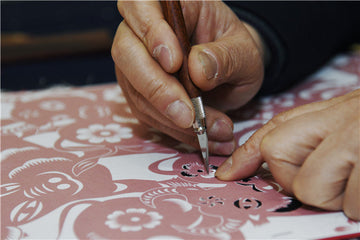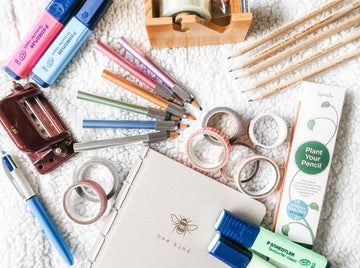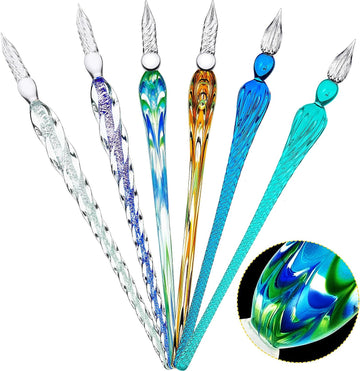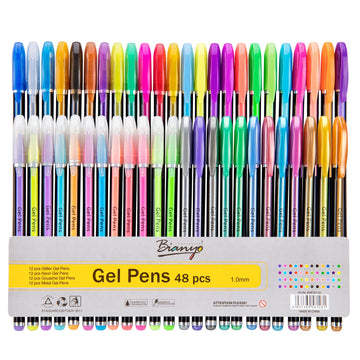L'Arte della Carta Intagliata di Jintan: Dove il Folklore Cinese Incontra la Danza della Lama

Introduzione
Immagina di tenere un foglio di carta così delicatamente intagliato da sembrare pizzo, eppure ogni filo è una storia—di eroi mitici, fioriture di loto o pescatori che cantano su fiumi nebbiosi. Questa è la Carta Intagliata di Jintan (金坛刻纸), un'arte di 1.500 anni dalla Jiangsu, Cina, dove gli artigiani trasformano la semplice carta in finestre su un altro mondo. A differenza dell'arte occidentale del paper-cut o del kirigami giapponese, la magia di Jintan non sta nelle forbici ma nelle lame, che tagliano decine di strati per creare sinfonie di luce e ombra.
Una Fetta di Storia
Nata nella dinastia Sui (581–618 d.C.), le prime opere di Jintan decoravano altari di templi e lanterne per festival, ritenute capaci di scacciare gli spiriti maligni. Durante la dinastia Ming (1368–1644), divenne un elemento quotidiano: le spose portavano intagli "Doppia Felicità" per la fortuna, mentre i contadini appendevano motivi "Cinque Cereali" per pregare per i raccolti.
Il XX secolo ha quasi messo a tacere quest'arte. Poi, maestri come Yin Zhuo hanno reinventato la tradizione, fondendo la fluidità della pittura a inchiostro con la precisione dell'intaglio su blocchi di legno. Oggi è un Patrimonio Intangibile Nazionale, ma meno di 10 grandi maestri mantengono viva la fiamma.
Il Balletto della Lama: Strumenti e Tecniche

Materiali:
Carta Xuan (carta di riso), tinta di cremisi, indaco o oro.
Coltelli affilati come rasoi, affilati a bordi di 0,1 mm.
Una tavola rivestita di cera d'api per afferrare la carta senza strapparla.
La Danza:
Impilamento: Fino a 50 fogli sono fissati e pressati in un unico blocco.
Intaglio: Gli artisti "disegnano" con le lame, alternando tagli negativi (linee incavate) e tagli positivi (sculture di forme). Un solo errore rovina l'intero blocco.
Sbucciatura: Come spiegare le ali di una farfalla, gli strati si separano per rivelare motivi identici.
Simboli in Movimento:
Miti: Gli Otto Immortali che attraversano gli oceani, draghi che inseguono perle.
Natura: Stagni di loto simbolo di purezza, melograni per la fertilità.
Vita rurale: Pescatori che gettano reti, bambini che inseguono lucciole—un modo di vivere che svanisce preservato nella carta.
Perché Jintan si distingue
Mentre gli audaci animali zodiacali rossi dello Shaanxi o i ritagli floreali del Guangdong incantano con semplicità, Jintan ipnotizza con complessità. Un singolo pezzo può contenere oltre 1.000 tagli per pollice quadrato, ognuno un colpo deliberato di filosofia. Per esempio:
“Nodo Infinito”: Linee intrecciate senza inizio né fine, che riflettono le credenze buddiste nella rinascita.
“Cento Uccelli che Adorano la Fenice”: Un capolavoro di 3 piedi dove ogni piuma è un'incisione separata.
Tra estinzione e innovazione
Crisi: Il Maestro Yang Zhaoqun, 68 anni, si rammarica, “I miei apprendisti hanno smesso—dicono che è più facile programmare app che intagliare per 10 ore al giorno.” Repliche al laser ora invadono i mercati a 1/10 del costo.
Speranza:
Musei & Scuole: Il Centro del Patrimonio Jintan forma adolescenti in campi estivi; i loro video virali su TikTok (#PaperMagic) attraggono fan della Gen-Z.
Fusione Globale: Nel 2024, la stilista italiana Elena Rossi ha incorporato intagli Jintan negli abiti della Milano Fashion Week, abbinando seta e fragilità della carta.
Kit fai-da-te: Per 30$, chiunque può provare un kit semplificato “Carpa Fortunata”—modelli pre-stampati, lame sicure e istruzioni bilingue.

Come vivere l'arte Jintan
Visita:
Museo del Patrimonio Immateriale Jintan (Jiangsu): Tocca opere del XVIII secolo sotto vetro, i cui bordi sono ancora affilati.
Biennale d'Arte di Shanghai (2025): Una dimostrazione di intaglio dal vivo del Maestro Yang.
Colleziona: Cerca il Sigillo d'Oro che certifica i pezzi fatti a mano. Evita le finiture lucide—il vero Jintan ha una texture morbida e fibrosa.
Prova: Partecipa a un laboratorio virtuale tramite China Art Academy (strumenti spediti globalmente). Inizia con “Fiori delle Quattro Stagioni”—un motivo indulgente per principianti.
Conclusione: Più della carta, un testamento alla pazienza
Nella nostra epoca di stampanti 3D e arte AI, la carta intagliata Jintan sussurra un'idea radicale: la lentezza come ribellione. Ogni taglio è una meditazione, un rifiuto di lasciare che le macchine cancellino le impronte umane. Quando appendi una lanterna Jintan o la indossi come gioiello, ricorda—non stai solo possedendo arte. Stai salvaguardando un linguaggio di pazienza, un colpo di lama alla volta.





